Summary, abstract and full texts n° 107
Dossier: L’Aveu [Avowal]
Coordinated by Béatrice Fleury
Béatrice Fleury: Questionner l’aveu (pdf) [Questioning confession]
I. The origins and foundations of a concept
Emmanuelle Danblon: Une rhétorique de l'aveu. Effets d'évidence et effets de sens (pdf)[A rhetoric of confession: the effects of evidence and the effects of the senses]
- The goal of this article is to examine one of the great questions of rhetoric, by means of a study of avowal. Is it possible to establish a link between the validity of an argument and the persuasive force of the spoken word? If an avowal cannot fulfil the function of an argument, where does its persuasive power reside? And finally, how does an avowal as an act of language appear more "evident" than an argument constructed by the orator? By means of a pragmatic and rhetorical enquiry, illustrated finally by the use of avowal in the gacaca courts in Rwanda, we try to take account of the technical link which is established between technical evidence and extra-technical evidence, between truth and persuasion.
Christian Biet: Droit et littérature sous l'Ancien Régime. Le cas de l'aveu, preuve notoire (pdf) [Law and literature in pre-revolutionary France: the case of confession as irrefutable proof]
- Like judicial phenomena, legal methods do not exist as such, and their effectiveness is only apparent because they are formally constructed and contractually recognized by all parties at a given moment in history. Proof in law is therefore only proof because it forms part of the phenomena which are historically empowered by the law, morality, common sense, politics, etc. to produce judicial or legal truth regarding a case. And like any other proof, and like any other legal (and judicial) phenomenon and method, avowal is no exception to the rule. However, in this context, avowal had a predominant place in the law of the ancien régime, as it does in contemporary law. But no matter how predominant avowal may be, it offers only one version of the judicial truth at a given moment in the case. It represents one judicial truth, in other words one possible version of the truth subject to judgment, in that this avowal has been obtained as a result of particular procedures. This is the question in which literature took an interest: starting from considerations of law, in fact, literature gives itself some leeway, distances itself, in relation to legal proof, and examines it at another level, doubts its probative nature or dreads its mechanical and public application. This is why literature sees limits which the law should not cross and recounts the silences it must accept. In Madame de Lafayette’s novel The Princess of Clèves, Madame de Clèves’ avowal, so probative and so fit to condemn her to a process of public punishment, remains secret, judged by her husband and assumed by the guilty woman within the limits of intimacy, and becomes a terrible and much more violent private punishment. For readers it gives rise to an examination dealing not only with that particular avowal, but with avowal as such and in all circumstances, as manifest and sufficient proof in the eyes of the law and those of private consciences. Literature, which thus makes use of the legal and judicial method of proof by avowal, continues at the same time to analyze it, displace it, surround it by its other aspects – those of conscience, intimacy or special interest – to take hold of its weaknesses and provoke debate on the tangible signs of proof and on proof itself, in other words the beliefs which determine it.
II. From confession to its staging
Ophir Levy: La forteresse et l'aveu. À propos d'Un Vivant qui passe de Claude Lanzmann (pdf)[The fortress and confession: concerning Claude Lanzmann’s film A Visitor from the Living]
- In his 1997 documentary A Visitor from the Living, Claude Lanzmann confronts the mass denial of Maurice Rossel, the Red Cross delegate who visited the camp of Terezín in June 1944. Rossel was completely deceived by the Nazi masquerade which consisted of disguising the horror of the camp behind a decor hastily constructed in view of the inspection. The film shows the figure of the witness in crisis and, more radically, challenges the notion of visibility itself, which ceases to be a manifestation of reality but the perverted place of its dissimulation.
Delphine Robic-Diaz: Quand le cinéma français passe aux aveux. Les guerres de décolonisation entre indicible et inmontrable (pdf) [When French films start to confess: the unspeakable and unshowable aspects of the decolonization wars]
- Since decolonization, French cinema has been regularly confronted with the spectacle of its guilt, through depictions of the exactions committed and of the defeat. Over the years the film subject of avowal has thus become as much the expression of guilt as of a desire to acknowledge the traumatism suffered by the French combatants.
Alpha Ousmane Barry: Les aveux de comploteurs en Guinée : mise en scène et mensonge historique (pdf) [The confessions of the Guinea plotters: staging and historical falsehood]
- A quarter of a century after the death of Sékou Touré, Guinea finds it difficult to assume its past. This failing memory prevents it from putting together the scattered fragments of its history. There is a gap between the official memory propagated by the totalitarian regime and the historical reality. In this conflict between memory as a need and memory as a duty, the archives, which I replace in the context of the procedure for extorting confessions, form my main source of information. In this contribution we propose to examine how the contents of depositions, the way in which they are presented and the scenarios at work in the textual framework reveal the designated figure of the guilty party on the basis of a collection of ill-assorted facts and events.
III. Confession and memorial tensions
Béatrice Fleury : Quand la presse française s'empare du passé de Günter Grass (2006-2007). Des dits de l'autre aux dits de soi (pdf) [The French press treatment in 2006-2007 of Günther Grass’s Nazi past: from the words of others to one’s own words]
- An analysis of the comments on the French press on Günter Grass’s avowal of his past in the Waffen-SS gives rise to many surprises. The initial shock was followed by an effort at contextualization which shifted consideration towards memory, both individual and collective. Thus the contexts in which Günter Grass’s past was examined were rooted in the ties which had developed between the writer and some French intellectuals.
Joanna Teklik : L’affaire Popieluszko ou l'histoire d'un aveu politique singulier (pdf) [The murder of Fr. Popieluszko, or the story of an unusual political confession]
- Wieczyński’s film Popieluszko: freedom is within us, released in Polish cinemas in 2009, recalled the murdered priest who became one of the symbols of Polish resistance to the soviet regime. After being kidnapped and tortured, Fr. Popieluszko was killed on 19 October 1984 by three members of the security services controlled by the Ministry of the Interior. "Alive he was a nuisance, dead he was a hindrance": his tomb soon became a place of pilgrimage and public opinion demanded his immediate canonization. Faced with this reaction, the authorities, who were embarrassed (for various reasons), staged a completely pre-arranged trial which revealed both internal dissensions in the Party and the cohesion and strength of the Church. It should be noted that the trial of Fr. Popieluszko’s murderers, initially conceived to demonstrate national consensus, turned into a demonstration of the radical impossibility of consensus. In the end the avowal which was the centerpiece of the trial was nothing but a false avowal, still "controlled" by the ruling authorities, a sort of fiction aimed at protecting those who were really responsible. It need not be added that although the murderers were condemned and imprisoned, they subsequently benefited from substantial remissions of their sentences. The release of the film, some recent publications and the question of the future beatification of Fr. Jerzy have put the Popieluszko affair back in the newspapers, and recall not only the Polish martyr, but also the story of a trial which was unique in the annals of the soviet bloc countries, and that of an unusual political avowal.
Other subjects
Sabina Frontera : « Un espace de liberté ». Les internés militaires italiens à Wietzendorf (pdf) ["A space of freedom": the Italian soldiers interned at Wietzendorf]
- After Italy’s withdrawal from the war on 8 September 1943, the Germans disarmed over 800,000 Italian soldiers. They were asked to choose between continuing to fight beside the Axis or become prisoners. The majority chose detention in Germany. However, the birth of the Social Republic (known as the Republic of Salò) made the presence of "Italian prisoners" in the Reich politically complicated, which is why the Reich, in agreement with Salò, decided to call them "military internees". This was a fortunate choice for the Reich, which thus succeeded in getting round the requirements of the 1929 Geneva Convention by avoiding the control of international organisms, including the Red Cross. Oflag ’83 at Wietzendorf was one of the camps for Italian military internees (IMI). Structurally there was little to distinguish it from the other Oflags and Stalags. Dilapidated, over-crowded barracks offering no protection against the severe winters, primitive sanitary facilities, non-existent health care. A "normal" camp that was exceptional in its sustained experience of resistance, which went beyond the rejection of the war, the world of the concentration camps and the regimes of those who had desired and created them. The prisoners of Wietzendorf engaged in a profound reflection on the past, on the fascist era (the Ventennio or 20 years) and its sense, and on the Italy which the IMI would have liked to build when they returned home. They struggled every day to maintain a small space for freedom in the lager, learn to examine the reality of the camps and the ideologies which had generated them with a critical eye, and to imagine the Italy of tomorrow.
- This article presents the results of research conducted in Wroclaw in 2006 under the sponsorship of the Fritz-Stern Scholarship. These results formed the basis for a Master of Arts thesis defended in 2007 in the department of Cultural Studies at the Europa – Universität in Frankfurt (Oder), Germany. The aim of the research was to analyze the factors that influenced Jews to either emigrate from Poland or assimilate into Polish culture between 1945 and 1968.
The journal is available on line at
openedition.org
All issues
-
No. 138 (04/2024) Trials
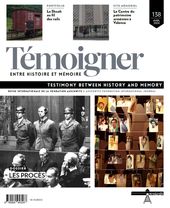
This dossier will deal with trials that have provided a legal answer to a demand for justice. Several cases will be addressed ranging from Istanbul and the Nuremberg Doctors' trial to the German policemen of the Brussels Jewish section and the gacaca trials in Rwanda.
Table of contents (Dutch version)
Table of contents (French version)No. 137 (10/2023) Children's Literature in Light of the Holocaust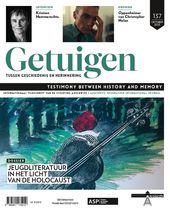
In France and Belgium, research into the relationship between children's literature and the Holocaust is rare, in contrast to the phenomenal attention in America (everyone knows Art Spiegelman's Maus) and in other English-speaking countries. Yet children's books depicting the Holocaust in words and pictures have been steadily gaining ground in post-war France and Belgium. While literary criticism and research still seem to be in their infancy, this dossier will show that critical analysis of this corpus is highly relevant for the future.
Table of contents (Dutch version)
Table of contents (French version)No. 136 (04/2023) The Executioners
The executioner has always fascinated and frightened. The perpetrators of mass crimes are those who carry out, facilitate or order the annihilation of a specific group. Issue 100 of Testimony: Between History and Memory, published in September 2008, examined the Nazi executioners. This dossier offers readers a historical and criminological approach to other genocides of the 20th century.
Table of contents (Dutch version)
Table of contents (French version)No. 135 (10/2022) Disobedience
This issue looks at the concept of disobedience in wartime. While the concept of civil disobedience may seem familiar in these times of endemic protest, there was a time when obedience was the rule. In a military context, disobedience was frequently followed by deadly consequences. This dossier focuses on three cases from the First World War and one from the Algerian War (1954-1962).
Table of contents (Dutch version)
Table of contents (French version)No. 134 (04/2022) The Killing of the ‘Useless’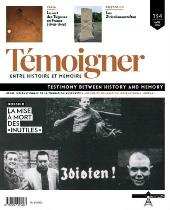
During the Second World War, the Nazi regime didn't just try to destroy the Jewish "race", which it considered dangerous. Before implementing the Final Solution, the Nazis massacred those who didn't fit in with their eugenic racial ideology and whom they considered inferior. In this dossier, we focus on the mentally and physically handicapped, systematic victims of Nazi pseudo-medical madness throughout the world conflict.
Table of contents (Dutch version)
Table of contents (French version)No. 133 (10/2021) 1918-1938: The politicisation of music in Europe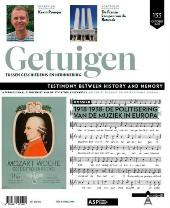
1918-1938: The politicisation of music in Europe
This dossier looks at the instrumentalisation of music by the political world between the wars. The cases are numerous and shed light on the way in which political propaganda was propagated in European musical culture.
Table of contents (Dutch version)
Table of contents (French version)No. 132 (04/2021) AKTION REINHARDT and AKTION ERNTEFEST
AKTION REINHARDT and AKTION ERNTEFEST
The Aktion Reinhardt saw approximately 1.8 million Polish Jews perish in the gas chambers of Bełżec, Sobibór, Treblinka and Majdanek between March 1942 and November 1943. The Jews who ‘escaped’ the gas chambers were shot in Majdanek, Trawniki and Poniatowa on 3 and 4 November 1943 during Aktion Erntefest. The dossier we are proposing takes stock of current research on the Aktion Reinhardt. This historical event has experienced a resurgence of interest among historians of the Shoah over the last fifteen years, thanks, among other things, to archaeological advances at the various sites concerned. We have come a long way since Yithzak Arad's pioneering work in 1987: Belzec, Sobibor, Treblinka: the Operation Reinhard Death Camps. The dossier highlights different perspectives to discuss current research related to the issue. It addresses the erasure of traces, the sociological perspectives of the executioners, the excavation of extermination sites and the most recent historiography.
Table of contents and abstracts (Dutch version)
Table of contents and abstracts (French version)No. 131 (10/2020) Historiography of the Second World War in the Far East
Historiography of the Second World War in the Far East
For many people, 8 May 1945 and the surrender of Nazi Germany is the final chapter of the Second World War. However, it is often forgotten that the months between May and September 1945 were decisive for the future of the world, as fierce fighting continued in the Pacific between the United States and the Japanese Empire until the latter’s unconditional surrender on 2 September 1945, the actual date of the end of the Second World War.Table of contents and abstracts (Dutch version)
Table of contents and abstracts (French version)No. 130 (04/2020) Reception of the Shoah and mentalities in Jewish and Christian circles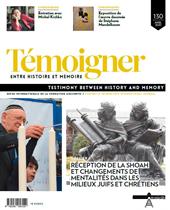
Reception of the Shoah and mentalities in Jewish and Christian circles
The reception of the Shoah has become, for all of humanity, a place of questioning and awareness. This dossier will aim to establish and evaluate the modalities and challenges of the transmission of the Shoah and to measure the resulting changes in identities and mentalities. What were the Catholic views on Judaism before and during the Shoah? What Jewish liturgies and interreligious rites exist for the commemoration of the Shoah in Israel and the United States? The evolution of mentalities in the Jewish world in relation to the Shoah will also be exposed through the analysis of the so-called Bitburg controversy, triggered by the visit of the American President, Ronald Reagan, to the German military cemetery of Bitburg (FRG) in May 1985. The Auschwitz Carmel affair (1985-1993) finally reveals the involvement of the Belgian and French Churches in the resolution of the conflict and is undoubtedly a key stage in the Church's 'teaching of esteem' with regard to the Jews. The historical answers provided in this dossier to the question of the Shoah may be decisive for the survival of Judaism and the relationship between Judaism and Christianity.
Table of contents and abstracts (Dutch version)
Table of contents and abstracts (French version)No. 129 (10/2019) Recognition of victims
Recognition of victims
In recent decades, the idea has gained ground that victims of mass crimes deserve recognition. This has become an essential category of our memorial culture. This dossier aims to take stock of this issue by looking at the broad spectrum of measures to ensure recognition, from simple remembrance to targeted judicial interventions, and by recalling the growing importance of the victim in international criminal justice. It returns to the problematic aspects of recognition when it leads to competition among victims.
Table of contents and abstracts (Dutch version)
Table of contents and abstracts (French version)No. 128 (04/2019) 25 years on, how to remember the Tutsi genocide
Kwibuka [Remember]. 25 years on, how to remember the Tutsi genocide
April 1994. Images of mutilated bodies are projected on European screens, originating from Rwanda. 25 years later, we remember.Table of contents and abstracts (Dutch version)
Table of contents and abstracts (French version)No. 127 (10/2018) Perpetuation of violence after 1918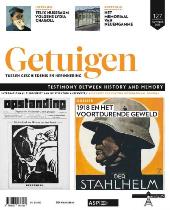
Perpetuation of violence after 1918
One hundred years ago, the First World War ended in November 1918. After four years of bloodshed, peace returns to Europe. At least, that was the impression of the victors at the time, and today it is also the impression of the commemorators who celebrate its centenary. The historical reality is more complex. At least until 1923, violence continued in the form of revolutions and counter-revolutions, wars and civil wars. The spirits also remain in the grip of violence on both the left and the right. The dossier proposes to define the contours of this Europe so strongly marked by the Great War, by evoking the culture of violence established by it and which, finally, degenerated into the total explosion of the Second World War.
No. 126 (04/2018) Questions about the future of remembrance work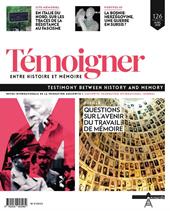
Questions about the future of remembrance work
On 20 and 21 January 2017, the seminar ‘Questions on the future of remembrance work’ was held in Esch-sur-Alzette, Grand Duchy of Luxembourg. The five articles in this dossier taken from the conference proceedings attempt to answer the following questions: How can we build a critical memory of the Shoah, free of myths and national fragmentation? How do we anticipate the absence of direct witnesses? In the future, who transmits what, and how?
No. 125 (10/2017) Persecution of homosexuals by the Nazis
Persecution of homosexuals by the Nazis
Historical knowledge of the Nazi persecution of homosexuals and their deportation has made significant progress in recent years due to the increase in research on the subject. In this dossier, recognised researchers as well as young doctoral and PhD students take the floor. The insights they provide concern both the question of the singular destiny of homosexual men and women during the Second World War and the way in which the memory of the homosexual victims of Nazism has evolved since the end of that war.
No. 124 (04/2017) Music in the camps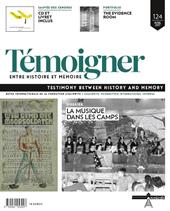
Music in the camps
Music was an integral part of the concentration camp world, Nazi and otherwise. What kind of music was composed and performed, and what exactly was its role in the camps? A factor of survival and resistance for the prisoners, a way for them to express their hope and their humanity - or, on the contrary, an instrument of oppression exploited by the executioners? What is the function of music in the work of memory following the experience of extreme violence and suffering? This dossier proposes to explore these issues.
No. 123 (10/2016) Translating Memory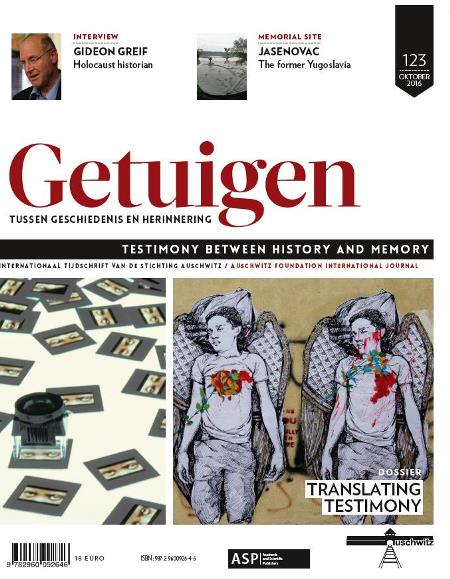
Translating Memory
Presentation of the dossier: What is the relationship between testimony, defined as a more or less ritualized firstperson account of political violence, and translation? Correspondingly, how does the translator position herself towards the witness? Can the translator be, or become, a witness? How, when and why are testimonies translated? Which linguistic and discursive strategies do translators resort to when faced with ethically challenging texts? Which role do they play exactly in the transmission of the historical knowledge, cultural values or social critique conveyed by the testimony? Does translation weaken or rather reinforce the relevance and impact of the original statement? How important is translation in literary, political and institutional settings? Do these specific settings determine translation practice in significant ways? To which extent can subsequent processes of transcription, editing, translation and archiving affect the source text? And how accurate are the boundaries we draw to distinguish witnessing from translating, documentary from literary testimony, the original from its translation? These are the main questions we intend to explore in our dossier.
No. 122 (04/2016) Revisionism and negationism
Revisionism and negationism
Strictly speaking, Holocaust denial is the ‘doctrine denying the reality of the Nazi genocide of the Jews, including the existence of the gas chambers’; by extension, the term refers to the denial of other genocides and crimes against humanity. The literature on Holocaust denial is extensive. There are studies on the subject in many countries as well as biographies of deniers. The argumentative and rhetorical strategies of the deniers have been widely deciphered. Websites systematically dismantle their fallacies. While there is no shortage of reliable information on the phenomenon, it is essential to return to it again and again, for several reasons.
No. 121 (10/2015) Extreme violence on stage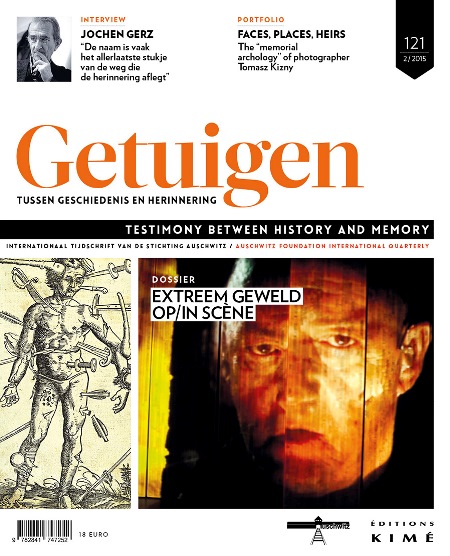
Extreme violence on stage
Extreme violence shows itself. It bursts through the screens. It surfs from one style and medium to another: news reports, documentaries, fiction, arts of all kinds. Yet theatre distinguishes itself from this mêlée all while constantly returning to the subject. Differently. Linked from its origins to the representation of cruelty and having “miraculously” escaped the often sterile polemics on the interdiction (or not)... of representing the Holocaust, it is still with the same youthfulness that theatre deals with extreme violence today, relentlessly pursuing the articulation of ethics and aesthetics.
No. 120 (04/2015) What future is there for the memory of the Armenian genocide?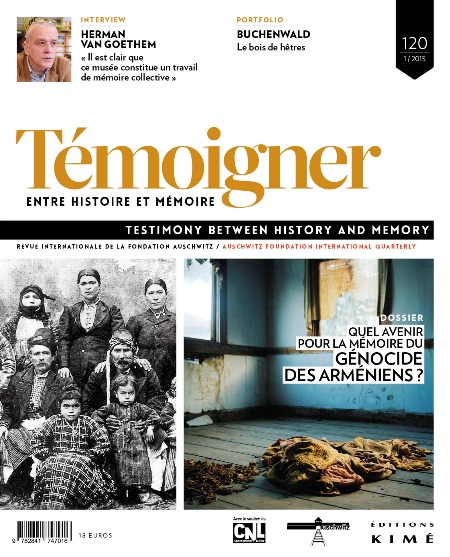
What future is there for the memory of the Armenian genocide?
The 1915 genocide of Turkish Armenians still stirs up numerous debates, controversies, declarations of principle, statements and counter-statements, and even negation. However, as we speak, ties are being established more and more openly, bridges are built and bonds strengthened between the Armenian and Turkish communities. Is reconciliation possible?
No. 119 (12/2014) 70 years ago, Auschwitz. Looking back on Primo Levi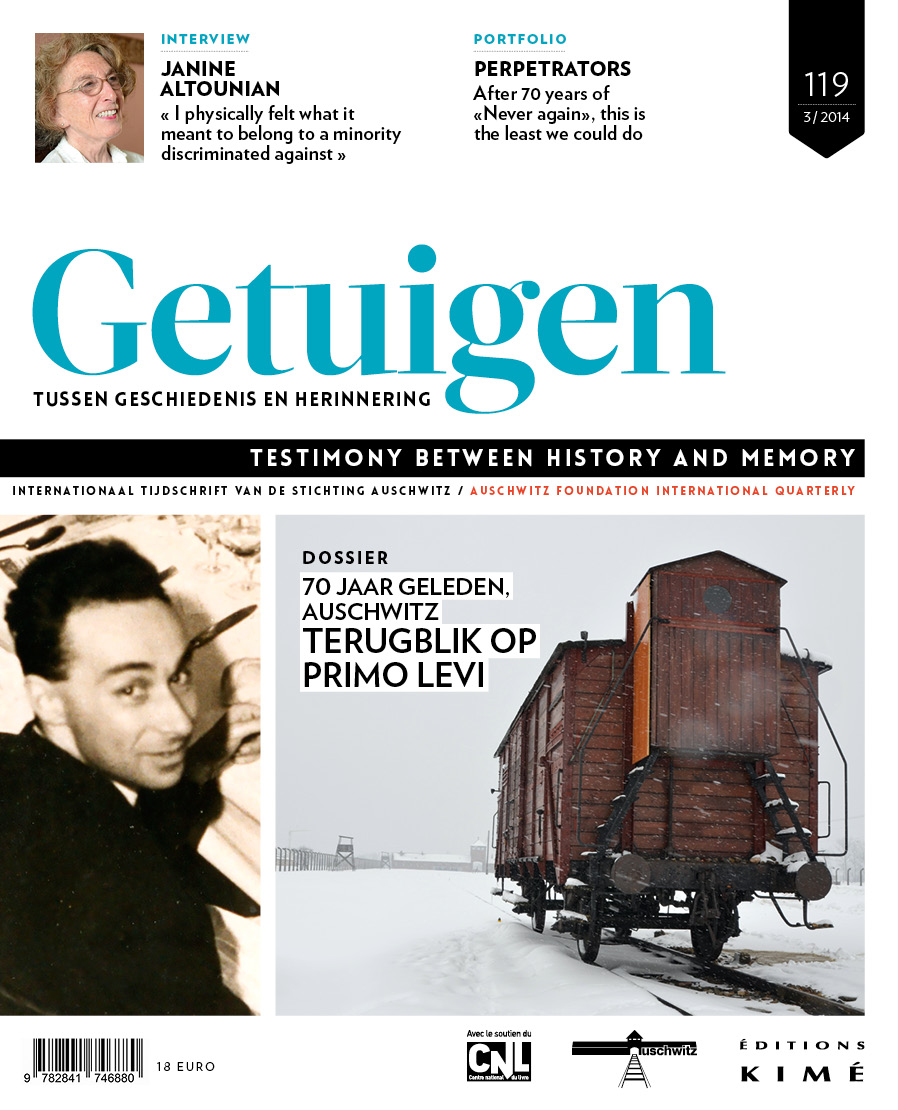
70 years ago, Auschwitz. Looking back on Primo Levi
27 January 1945. Seventy years ago the first soldiers of the Red Army marched into Auschwitz. One might argue that the camp was “liberated” then, but the truth is that neither Auschwitz, nor any of the other Nazi camps, was ever a priority to the Allied Powers. Primo Levi was one of the few survivors who knew how to hide and escape the enforced evacuation of the camps. With this dossier, we want to cast light on the complex figure that Levi was: a Jew, a deportee, a chemists, a witness, and a writer. It sets out to study his oeuvre and his interpretation of the notions of “resistance” and “engagement”, in order to understand how he eventually became a “professional survivor”, as he once described himself.
No. 118 (09/2014) Dictatorship and terror in Argentina, Chile and Uruguay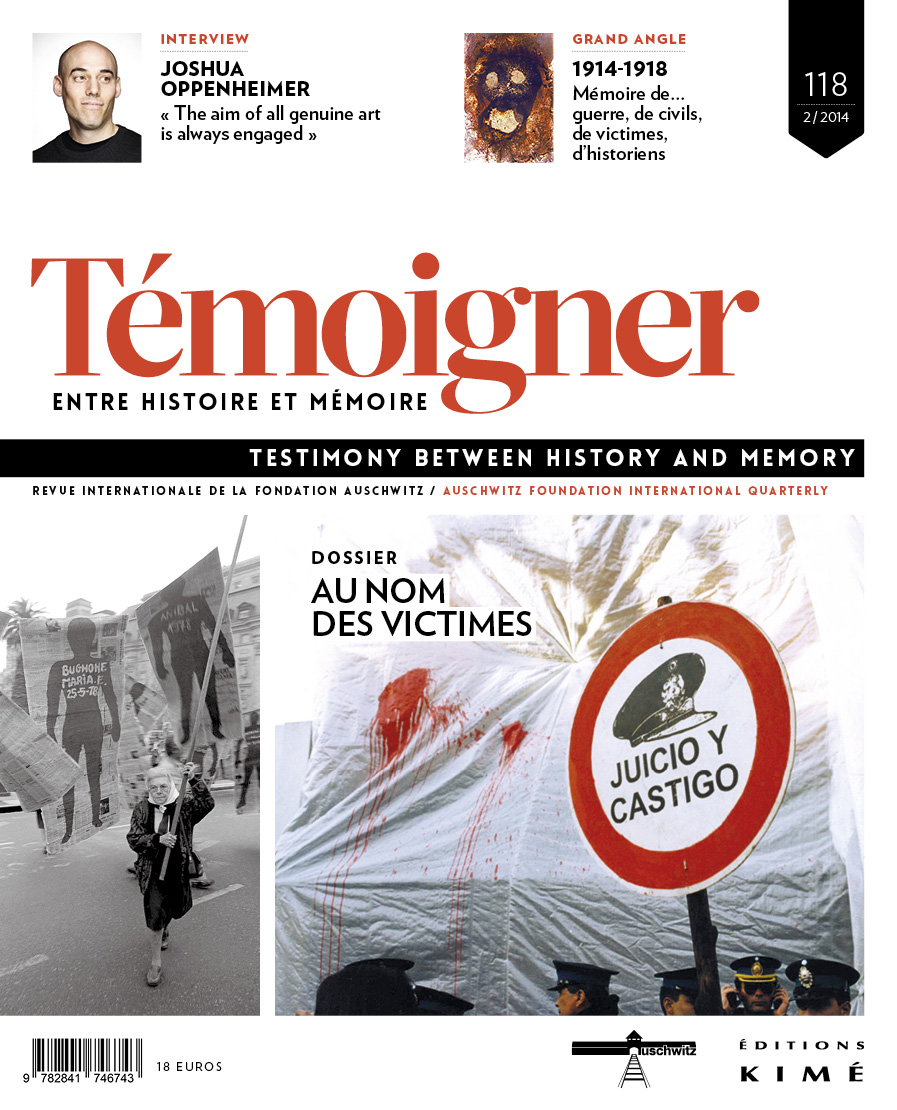
In the name of the victims. Dictatorship and State terror in Argentina, Chile and Uruguay
During the 1970s and 1980s, Argentina, Chile and Uruguay were in the grip of military dictatorships. The process of democratic transition that followed the long period of state terror involved the construction of particular narratives and memories, leading to a reconfiguration of the past. Despite local differences, this process is very much centered at the figure of the victim – a figure the articles in this dossier, collected by Claudia Feld, Luciana Messina and Nadia Tahir, set out to explore.
No. 117 (03/2014) Friends? Enemies? Relationships between memoriesAmis ? Ennemis ? Relations entre mémoires / Vriend of vijand? Hoe herinneringen zich tot elkaar verhouden [Friends? Enemies? Relationships between memories]
Much has been said and written about group memories, limiting their mutual relationships and history to conflicts, “wars”, competitions, or strategies for eclipsing or silencing. These terms have now become the platitudes of a kind of more general doxa about collective and cultural remembrance. This dossier proposes a critical reading of those terms and of that doxa by questioning the emergence, constitution, and inter-relating of different exemplary memories of the major violent episodes of the 20th century. It will address the relationships that those memories can maintain with other memories with which they share, if not the same event, at least similar characteristics and concerns.
No. 116 (09/2013) Memory tripsVoyages mémoriels / Herdenkingsreizen [Memory trips]
Should we fear what has been grouped under the term “memorial tourism”? Or should we take this as a reality of our time? Can any visitor, group or individual, nowadays be absorbed in the category of “tourist”? Or is this category a remote intellectual reduction of a personal experience that everyone is aiming during his visit? The problem appears in a somewhat different light when we think of tours for young people supervised by adults, usually teachers. This dossier gives the floor to historians and teachers with experience in the field.
No. 115 (03/2013) Memory construction in SpainL’Espagne en construction mémorielle / Spanje en de opbouw van de gedachtenis [Memory construction in Spain]
This dossier’s objective is to provide a benchmark for understanding the plural identities and relationships between memories and representation forms in contemporary Spain. Indeed, it is necessary today to take a fresh look not only on the stratified memories of the civil war, exile and the Franco repression, but also on the reception of other memories such as that of the Holocaust, and to propose new readings. We propose to highlight the conflicting or fruitful tensions between official actions, initiatives of associations and of artistic events.
No. 114 (12/2012) Memorial SitesSites mémoriels / Gedenkplaatsen [Memorial Sites]
Memorial sites constitute the concrete trace of European remembrance and history of the twentieth century. But what do they look like today? Exhibition and conservation criteria have changed during the last ten to fifteen years, like advances in historical research have changed the way we read and reconstruct past events. This is not only due to the fact that we have moved from a past history written by witnesses to a history written by professional historians. A new consciousness has emerged concerning transmission methods (memory education), and archeology has strengthened historical research. We tore off the veil of ideology that often influenced and prescribed the way we imagined permanent exhibitions, conservation and visits. Can we say we have entered a new era in memory transmission? It remains, in many ways, an open bet on the present and the future.
No. 113 (09/2012) The Taboos of German HistoryLes tabous de l'histoire allemande / De taboes van de Duitse geschiedenis The Taboos of German History]
The most painful or ambiguous periods in twentieth-century German history are characterized by numerous taboos, expressed in literature, photography and film as so many “returns of the repressed”. These studies focus in part on problems of antisemitism, and thus on the relationship of German-speaking societies to the Shoah. They also examine the way in which those societies confronted the violence they suffered, such as bombing, fleeing from the Red Army and the expulsions, and mass rapes.
No. 112 (06/2012) Children of the Spanish Civil WarLes enfants de la Guerre d'Espagne. Expériences et représentations culturelles / De kinderen van de Spaanse Burgeroorlog. Ervaringen en culturele voorstellingen [Children of the Spanish Civil War: Experiences and Cultural Representations]
The dossier in this issue deals with the experiences and cultural representations of childhood during the Spanish Civil War. It aims to help towards a better understanding of that conflict, which tore apart a population living on the same territory, by confronting the experiences of Spanish children who lived through it – as expressed in various forms during or after the war – with representations of those same children, particularly those coming from adults.
No. 111 (12/ 2011) Dangerous Game between Art and PropagandaArt & propagande : jeux inter-dits / Gevaarlijk spel tussen kunst en propaganda [Dangerous Game between Art and Propaganda]
Since the media came into existence, political institutions from political parties to governments have used them to promote their image, in order to win the support of the public they addressed. Authoritarian powers use the media as a means of consolidating their domination. But how can artists take part in propaganda, whose purposes are the opposite of those generally attributed to art? Does that mean setting aside their vocation, or do they themselves distort that vocation?
No. 110 (10/2011) Displacements, Deportations, ExileDéplacements, déportations, exils / Volksverhuizingen, deportaties, verbanningen [Displacements, Deportations, Exile]
States and criminal groups exploit population displacements to isolate or get rid of certain populations. In addition to being denied their normal rights, these populations lose visibility and are deprived of their reference points and social frameworks. In this way it is possible to make them the victims of constraints (deterritorialization, forced labor…) or violence (famine, massacres genocide…). These developments have spread on an unprecedented scale since the First World War and continue to grow worldwide. But there is also a dimension of remembrance to this reality: memories of these displacements are now being expressed in literature, and in exhibitions and museums. This dossier examines the contemporary double aspect of history and memory.
No. 109 (03/ 2011) 20th Century Wars and Genocides in Graphic Novels and Comic StripsLa bande dessinée dans l'orbe des guerres et des génocides du XXe siècle / Twintigste-eeuwse oorlogen en genociden in het stripverhaal [Twentieth Century Wars and Genocides as Portrayed in Graphic Novels and Comic Strips]
No. 108 (09/2010) How Documentaries Handle HistoryLe traitement de l'histoire dans les documentaires filmiques / De behandeling van de geschiedenis in de documentaire film [How Documentaries Handle History]
No. 104 (09/2009) Anti-fascism Revisited: History, Ideology, RemembranceL'Antifascisme revisité. Histoire – Idéologie – Mémoire / Nogmaals antifascisme. Geschiedenis, ideologie, gedachtenis [Anti-fascism Revisited: History, Ideology, Remembrance]
No. 103 (06/ 2009) Nazi Crimes and Genocides on the ScreenCrimes et génocides nazis à l'écran / Nazimisdaden en genociden op het scherm [Nazi Crimes and Genocides on the Screen]
No. 102 (03/ 2009) The Portrayal of Political Criminals in Films, Plays, Literature...Criminels politiques en représentation. Arts, cinéma, théâtre, littérature, médias / De representatie van politieke misdadigers. Kunst, film, theater, literatuur, media [The Portrayal of Political Criminals in Films and Plays, in Literature and in the Media]
No. 101 (12/2008) How to Educate, How to Remember?Quelle pédagogie, pour quelle(s) mémoire(s) ? / Welke pedagogie, voor welke herinnering(en)? [How to Educate, How to Remember?]
No. 100 (09/2008) Questions about the “Executioners”Questions de « bourreaux » / De kwestie van de “beul” [Questions about the “Executioners”]
Contact
Auschwitz Foundation – Remembrance of Auschwitz
Rue aux Laines 17 box 50 – B-1000 Brussels +32 (0)2 512 79 98
+32 (0)2 512 79 98 info@auschwitz.be
info@auschwitz.be
BCE/KBO Auschwitz Foundation: 0876787354
BCE/KBO Remembrance of Auschwitz: 0420667323
Office open from Monday to Friday 9:30am to 4:30pm.
Visit only by appointment.![]()
![]()
![]()
![]()
Become a member
To become a member of Remembrance of Auschwitz ASBL, take part in its activities and support its actions, please contact us.
Membership costs €40.00, payable to account n° 310-0780517-44 (IBAN : BE55 3100 7805 1744 – BIC : BBRUBEBB)
Donations of more than €40.00 qualify for a tax exemption for Belgian tax-payers.








































